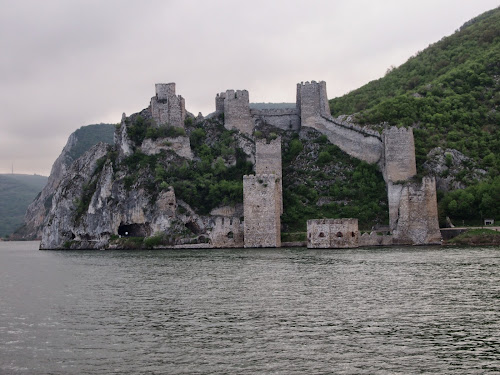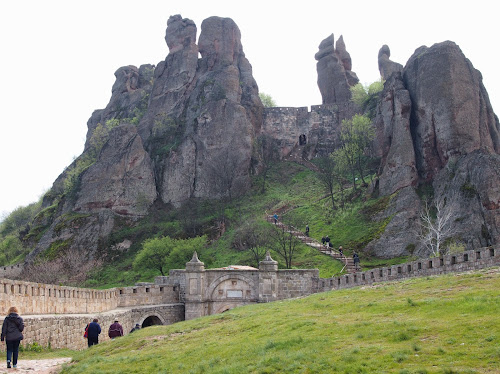Down the river from Belgrade, but still in Serbia, are the ruins of the 14th Century Golubac fortress. Looks like a good defensive position for those times, although it attracted a lot of battles and changed hands often. All of the powers in the region seem to have held it at some point. Doesn’t look very comfortable these days.
On the Romanian bank of the river there is an enormous likeness of King Decebalus, carved in 2004. He was a Dacian king who reigned from 87-106 AD and was defeated by the Romans. The Romanians are proud of their history as a non-Slavic people who have been in the region for thousands of years.
Cruising further down the Danube and stopping at the port of Vidin, Bulgaria, we first went up into the mountains to Belgradchik (“little white city”). The fortress above the town is built into fantastic rock formations. The Romans were first to begin fortifications (the wall at the top of the first photo between the rocks) and the Ottomans built the walls further down. Notice the person in the arched passageway in the second photo? The scale of this was breath taking. A well is in the lower fortress and there are two cisterns up top. Again, not very cozy, but stunning views.
The medieval Baba Vida fortress in Vidin dates from the 10th Century. Legend has it that a Bulgarian King who ruled from Vidin had three daughters and divided his kingdom among them. The sisters of Vida married drunkards and their kingdoms did not succeed. However, Vida never married, but devoted herself to her subjects, including building strong fortifications here at the fortress. Her subjects named the fortress after her, i.e. as “Grandma Vida.”
So far, northwestern Bulgaria has been very economically depressed, slow to recover from the transition from a communist economy to a free market. The country is losing population very quickly. The visible signs of poverty were hard to miss.







